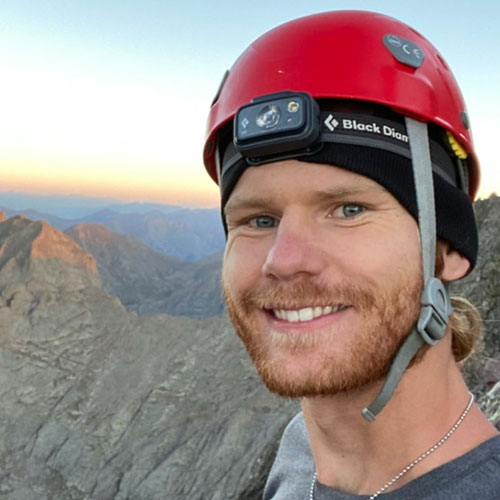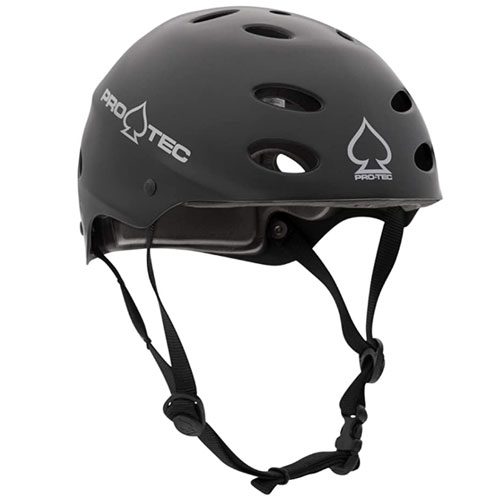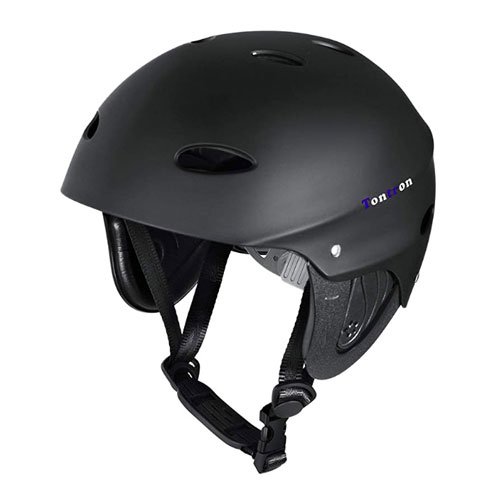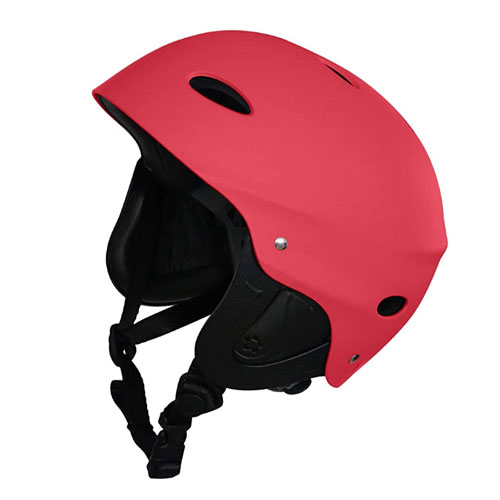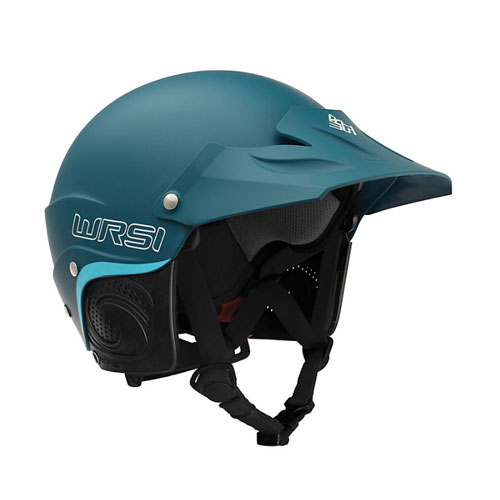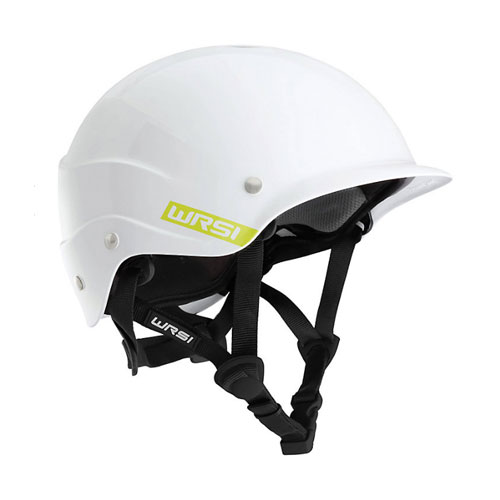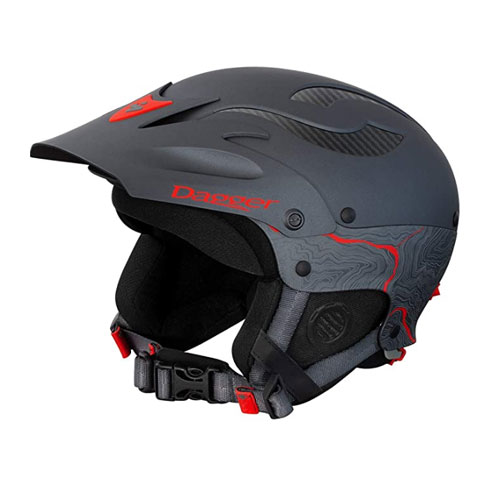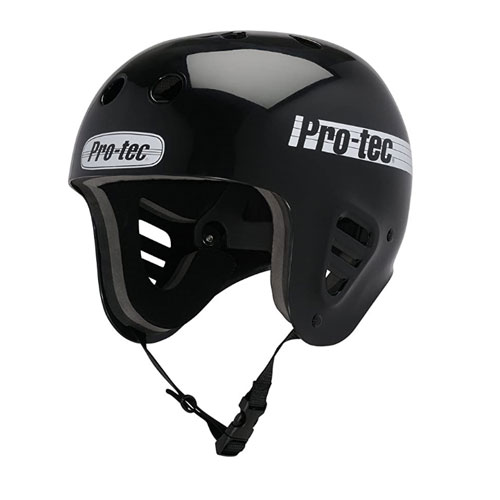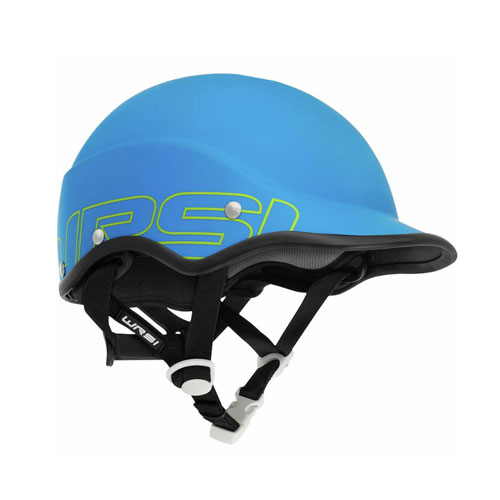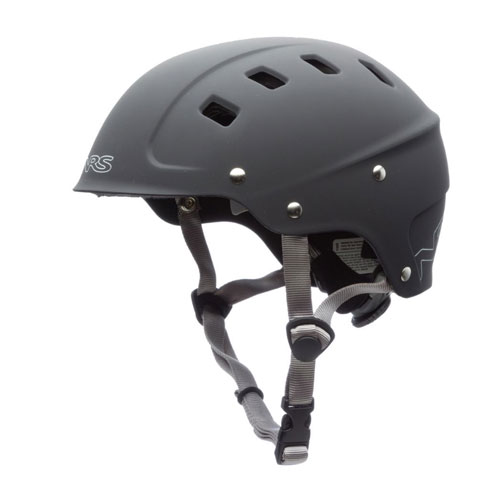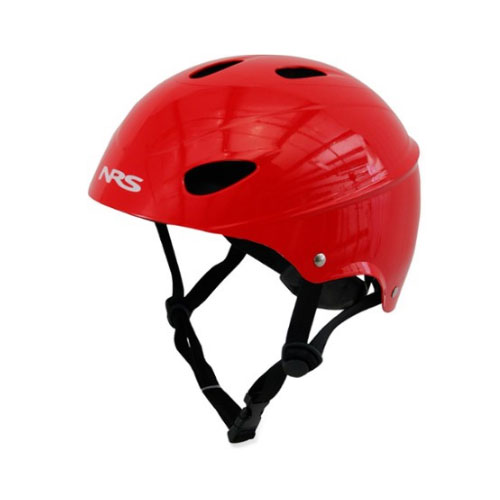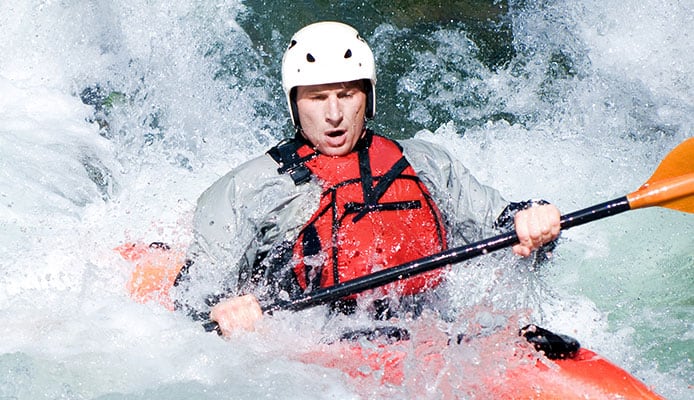
A strong and well-made kayak helmet can save your head if you have an accident on the water. Because of this, it should be high on your list of priorities when preparing for a kayaking adventure. Whether you’re an adrenaline junkie that goes whitewater kayaking or a recreational kayaker that enjoys relaxed paddling, a helmet has a very important purpose.
But how do you choose the right one? A good helmet should be comfortable, fit well, and be strong enough to withstand impacts. To help you decide, we’ve presented the best kayak helmets on the market and created a buying guide that will explain the features and answer all your questions.
OUR TOP PICK
Pro-Tec Ace
- Stand Out Features - Why We Love It
- Head Lock adjustable system provides a snug fit on every head
- Injection-molded shell increases the helmet’s strength and durability
- Dual-density liner significantly improves the comfort and safety
- Rear mount strap is great for head lights, cameras, or goggles
- System of fifteen vents evacuates water and allows your head to breathe
- Can also be used for other water sports
Best For: All-Around Kayaking
Head Circumference: 21.3 to 22 inches
Weight: 1.1 pounds
Shell: Injection-Molded ABS Plastic
Liner: Dual-Density EVA Foam
Vents: 15
Safety Standard: CE EN 1385
EDITORS CHOICE
Tontron Whitewater
- Stand Out Features - Why We Love It
- Adjustable fit allows it to sit perfectly on the head
- Buoyant shell remains afloat if you accidentally drop it
- Very lightweight considering the material quality
- Easily removable ear pads when you’re feeling warm
- Huge number of great-looking colors to choose from
- Adjustable chin strap
Best For: Fast Rapids
Head Circumference: 20.9 to 23.2 inches (Medium)
Weight: 0.91 pounds
Shell: ABS Plastic
Liner: EVA Foam
Vents: 11
Safety Standard: CE EN 1385
BEST VALUE
Vihir Adjustable
- Stand Out Features - Why We Love It
- Waterproof earflap gives your ears additional protection
- ITW quick-release buckle for getting the helmet on and off
- Versatile helmet for a large number of sports (kayaking, biking, skating)
- Cheap kayak helmet that matches more expensive models in quality
- Extra-strong webbing straps and stainless steel rivets for durability
- Can be used for whitewater kayaking
Best For: Multiple Sports (Kayaking, Biking, Skating)
Head Circumference: 19.7 to 2.1 (S), 21.6 to 23.7 (M), 22.4 to 24.9 (L)
Weight: 0.92 pounds
Shell: ABS Plastic
Liner: EVA Foam
Vents: 11
Safety Standard: CE EN 1385, CPC Certified
- Stand Out Features - Why We Love It
- Interconnect retention system keeps it in place on impact
- Built-in visor shades your eyes on bright sunny days
- Stong ABS shell reinforced with a polyurethane sub-shell
- Available in three sizes (easy to find the ideal fit)
- Foam liner is easy to remove and replace when needed
Best For: Maximum Impact Protection
Head Circumference: 20.9 to 22 (S/M), 22 to 23.2 (M/L)
Weight: 1.75 pounds
Shell: ABS Plastic + Polyurethane
Liner: EVA Foam
- Stand Out Features - Why We Love It
- Reinforced with a polyurethane sub-shell for added strength
- Easily-adjustable O-Brace harness provides the perfect fit
- Well-placed vents keep your head cool and prevent sweating
- Interconnect retention system secures the helmet in place
- Excellent choice for extreme conditions on the water
- Can be used for whitewater kayaking
Best For: Extreme Whitewater Conditions
Head Circumference: 20.9 to 22 (S/M), 22 to 23.2 (M/L)
Weight: 1.45 pounds
Shell: ABS Plastic + Polyurethane
Liner: EVA Foam
Vents: 3
Dagger Sweet Rocker Whitewater
- Stand Out Features - Why We Love It
- Shatterproof brim gives your eyes additional splash and sun protection
- Quick-release strap makes getting the helmet on and off very easy
- Occigrip turn dial allows you to adjust the helmet in any direction
- CoolMax anti-allergenic liner keeps your head cool and comfortable
- Injection-molded carbon fiber-reinforced shell easily withstands impacts
- Adjustable chin strap
Best For: Year-Round Kayaking
Head Circumference: 22 to 23 inches (M/L), 23.2 to 24 inches (L/XL)
Weight: 1.2 pounds (M/L), 1.35 pounds (L/XL)
Shell: ABS Plastic + Carbon Fiber
Liner: CoolMax Foam
- Stand Out Features - Why We Love It
- Rear mount for attaching goggles, a camera, or a head light
- Waterproof EVA liner prevents the helmet from soaking
- Eleven spacious vents allow the helmet to drain and breathe
- Low weight makes it comfortable even on long sessions
- Non-removable ear pads give your ears additional protection
Best For: Attaching Goggles and Lights
Head Circumference: 23.6 to 24.4
Weight: 0.5 pounds
Shell: Injection-Molded ABS Plastic
Liner: Dual-Density EVA
Vents: 11
Safety Standard: CE EN 1385
- Stand Out Features - Why We Love It
- Carbon composite shell provides exceptional toughness
- O-Brace harness ensures a snug fit without movement
- Available in three different sizes to fit every kayaker
- EVA liner is very easy to remove for cleaning
- Stylish design looks really good on the water
Best For: Comfort and Breathability
Head Circumference: 20.9 to 22.0 inches (S/M), 22.0 to 23.2 inches (M/L), 23.2 to 24.4 inches (L/XL)
Weight: 1.45 pounds
Shell: Carbon Composite + Polyurethane
Liner: EVA Foam
Safety Standard: CE EN 1385
- Stand Out Features - Why We Love It
- BOA ratchet system for easily adjusting the tightness
- Eight well-placed wents allow your head to breathe
- Chin strap with a four-point adjustment for maximum comfort
- Best whitewater kayak helmet for ususual head sizes
- Limited warranty on the construction and materials
Best For: Extra Small and Large Heads
Head Circumference: 21.9 to 22.6 inches (M)
Shell: ABS Plastic
Liner: Dual-Density EVA Foam
Vents: 8
Safety Standard: CE EN 1385
- Stand Out Features - Why We Love It
- DialFit adjustment system for easily tightening the harness
- Adjusts in a wide range of sizes (multiple kayakers can use it)
- Glued-in EVA foam liner for additional strength and protection
- Ten drainage ports prevent excess water from flooding the helmet
- Unisex design allows both men and women to use it
Best For: Universal Fit
Head Circumference: 20.9 to 24.4 inches
Weight: 1.31 pounds
Shell: ABS Plastic
Liner: EVA Foam
Vents: 10
Safety Standard: CE EN 1385
How To Choose A Kayak Helmet – Buying Guide
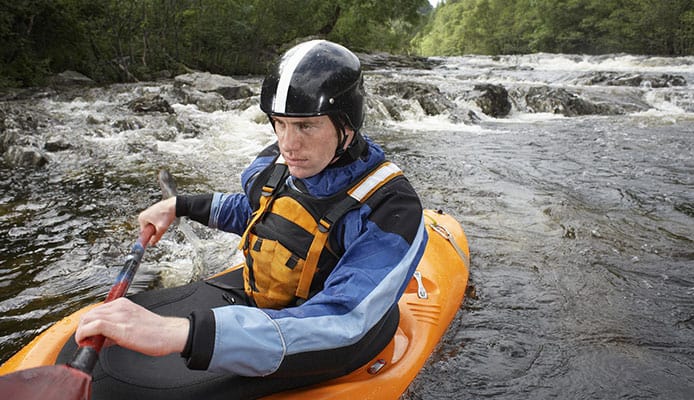
Size and Fit
Fitting the helmet properly is one of the most important things to do from both the comfort and safety aspects. Not has the same head shape and diameter, so sizes usually range from extra-small to extra-large kayak helmets for big heads.
When you put the best kayaking helmet on, you should tighten the straps so it isn’t able to move around. At the same time, you should feel comfortable having it on (it shouldn’t be too tight). The point of finding a perfect fit is to avoid undesired movement if you get thrown off the kayak and hit the water.
Retention System
The chin straps on your helmet for kayaking play a very significant role. For maximum protection and comfort, they should be easily adjustable on both sides. The buckle on the best kayak helmet should be secure, with at least four anchor points, two on each side.
Using the Helmet
As you certainly know, all kayakers should use helmets. However, some people take part in more extreme activities such as whitewater kayaking, which is why there are different types of helmets available. For basic kayaking, a half-cut helmet usually does the job just fine. It usually sits above the ears and provides good protection to the skull.
Next, there is a full-cut helmet, which is similar, but slightly larger. It covers the ears, giving your head extra protection and added insulation. Finally, you can get a full face whitewater helmet which looks a little like a motorcycle helmet. A full-face kayak helmet extends around the lower portion of your face, giving you maximum protection.
Besides impact protection, the helmet is also designed for different weather conditions. For colder weather, you should choose a model that extends over the ears, while the best kayak helmet for warmer temperatures should have many ventilation openings to allow breathability. These openings also double as drains, which is important if the water is splashing a lot.
Durability
When buying a new piece of kayaking equipment, all of us want it to last a long time. Luckily, helmets for kayaking are generally very durable. The most common materials used in the construction are hard plastic, composites, or carbon fibers.
The best helmet for kayak should be able to protect you and stay in one piece on many occasions, so take some time to read the specs and user experiences to find out whether it can really do this.
Price
While you don’t have to go out and get the most expensive whitewater kayak helmets, the price can sometimes be an indicator of the quality of the product. This being said, don’t opt for the cheapest product because it might fail when you need it most.
All of the kayaking helmets that we’ve reviewed are very good, so you have plenty of options to choose from. In addition, you can also use these products to compare to others and see if they are worth your money.
Safety Certificate
You should always check if the helmet you are buying has a safety certificate. For example, WRSI gives their certificate to a helmet as proof it has gone through serious testing. There are also different standards to which whitewater rafting helmets are tested that indicate how much damage a particular model can endure.
You might also like:
Best Drysuit Undergarments In 2023
Most top kayak helmet brands thoroughly test their whitewater helmets and display this information, so we advise that you always take a close look at this. Of course, helmets without certificates can be good too, but you can’t be certain of the amount of abuse it can take before it cracks.
FAQs
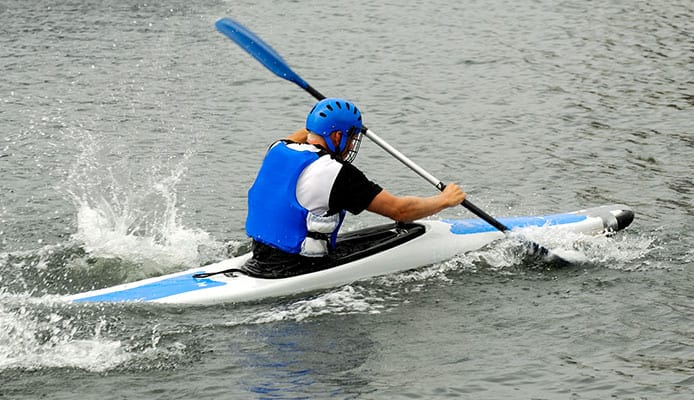
Q: How Snug Should Kayak Helmet Be?
As we’ve pointed out when talking about the fit, the helmet should be the snug but not too tight. The best whitewater kayaking helmet shouldn’t press on your head or make you feel uncomfortable, but it shouldn’t be too loose either.
An easy test you can perform to check this is to put it on, adjust the straps, and then shake your head in different directions. If the helmet moves around, it’s too loose and you need to readjust or go with a smaller size.
Q: How To Clean Kayak Helmets?
When maintaining your water helmet, you should only use clean water and mild detergent. After washing, make sure to leave it to dry naturally. For easier cleaning, some models allow you to completely remove the inner lining. Depending on the product, some of these linings can even be washed in a machine on a gentle cycle.
Q: How To Measure For Kayak Helmet?
The best way of measuring a helmet is by using a soft measuring tape to record the circumference of your head at forehead level. With this information, you can see where you place on the helmet size chart and choose the size accordingly.
For reference, the head circumference for standard sizes is as follows – 21.6 to 22.4 inches (small), 22.4 to 23.2 inches (medium), and 23.2 to 24 inches (large). In addition to the regular ones, many of the best kayak helmets also have extra-small and extra-large sizes.
Globo Surf Overview
To fully enjoy your time on the water, you must also think about safety and protection. We hope that our reviews and kayak helmets guide helped you decide on the type of helmet you want, so you know what to look for when buying.
If you are uncertain, feel comfortable to choose any of the best kayak helmets we’ve featured. The most important thing to remember is to be responsible when setting out on the water and always protect your head.


